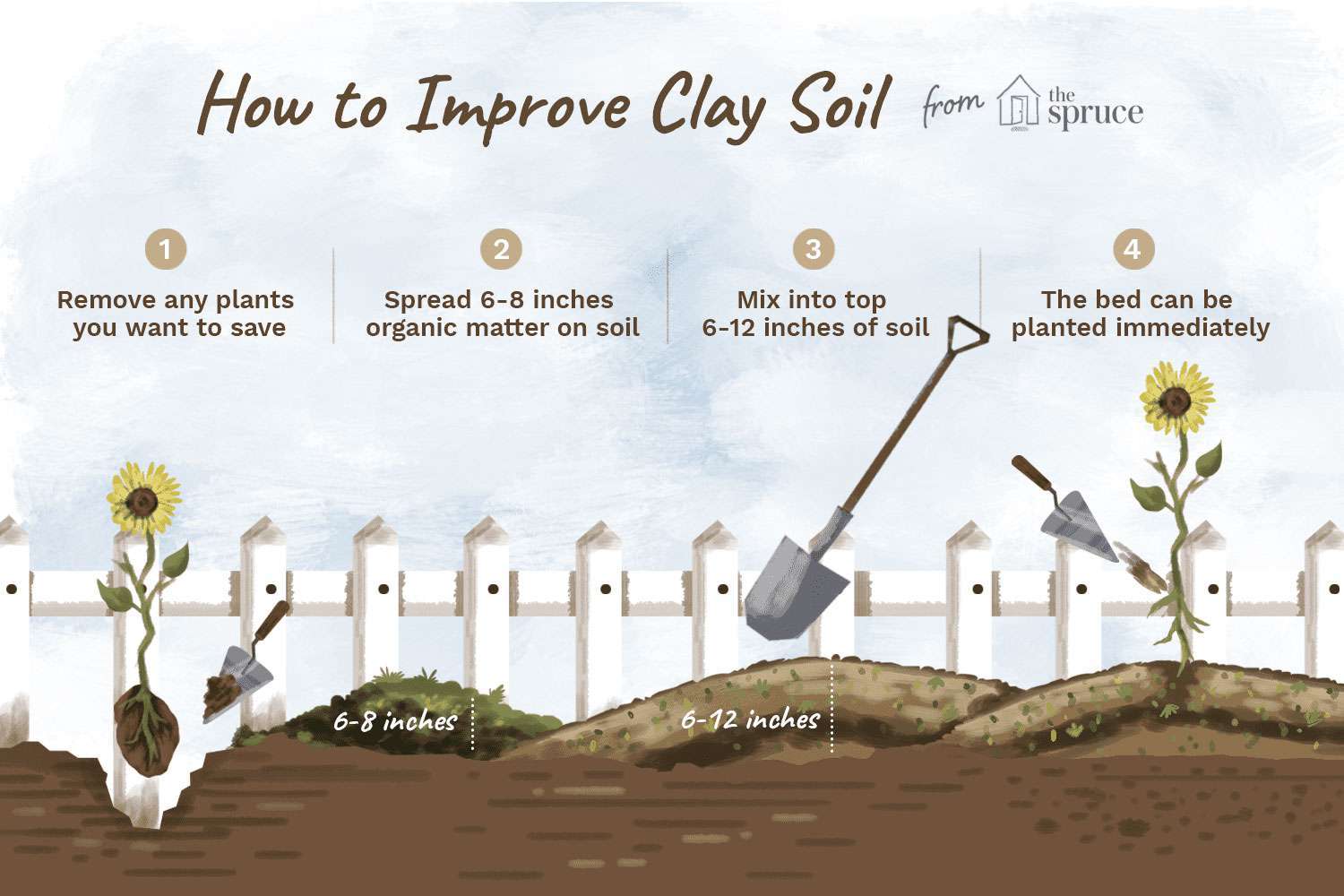Clay soil can pose a challenge for gardeners, but fear not, there are steps you can take to break it down. First, consider adding beneficial amendments such as organic compost, pine bark, composted leaves, and gypsum. These amendments help to improve the structure and drainage of the soil. Aerating the soil is also essential, as it allows air to flow through and aids in the breakdown of clay by microorganisms. Another helpful technique is mounding soil or organic material on top of the clay, as this allows bacteria, bugs, worms, and plants to penetrate and decompact it. Composting clay soil with organic matter, such as animal manure, not only adds valuable nutrients but also introduces beneficial microbes. Additionally, commercial soil conditioners like perlite, greensand, lime, sulfur, gypsum, and vermiculture can speed up the process of breaking down clay soil. Mulching with organic material serves a dual purpose of adding organic matter and attracting bacteria and bugs that assist in breaking down the clay. Remember to avoid compacting the soil by refraining from walking on it after aerating and amending. Growing cover crops, especially nitrogen-fixing plants, is another effective method for improving clay soil. Lastly, using raised garden beds filled with organic matter can gradually break down clay soil without the need for tilling. By utilizing these techniques – adding organic matter, aerating the soil, using soil amendments, and avoiding tilling – you can break up clay soil quickly and effectively.
Steps to Break Down Clay Soil
Clay soil can present a challenge for gardeners due to its dense and compact nature. However, with the right approach and amendments, it is possible to break down clay soil and create a healthy environment for your plants to thrive. In this article, we will outline 15 steps that will guide you through the process of breaking down clay soil and transforming it into a fertile and productive garden bed.
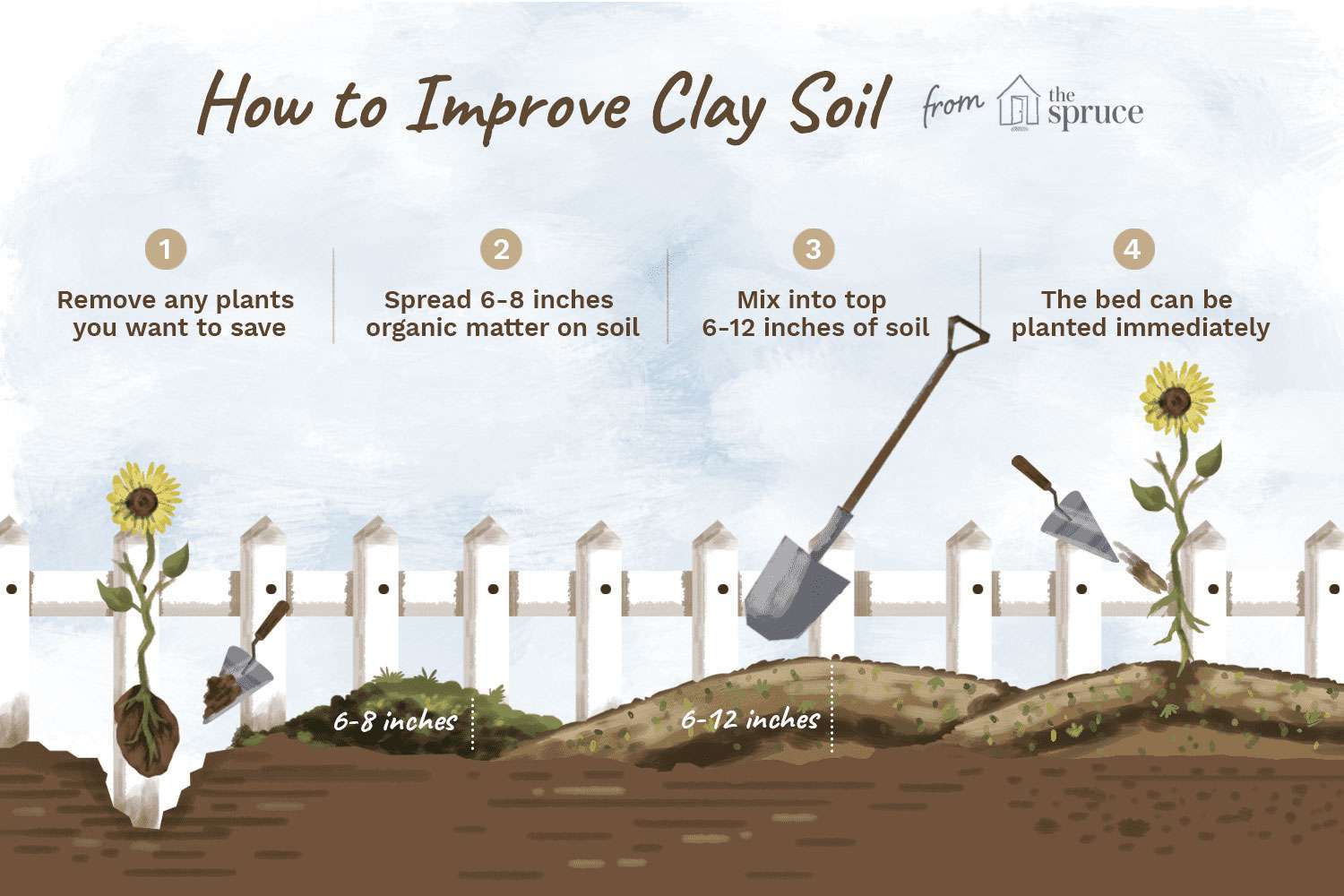
Step 1: Identify the Problematic Clay Soil
The first step in breaking down clay soil is to identify if your soil is indeed clay. Clay soil is characterized by its sticky and heavy texture, which makes it difficult for water to penetrate and drain properly. It is important to understand the type of soil you are working with before proceeding with any amendments.
Step 2: Prepare the Soil for Amendments
Before adding any amendments, it is essential to prepare the soil properly. Remove any weeds, rocks, or debris from the area, and use a garden fork or tiller to loosen the soil. Breaking up the compacted clay will make it easier for the amendments to penetrate and work effectively.
Step 3: Add Organic Compost
Organic compost is a valuable amendment for clay soil as it improves soil structure, enhances drainage, and adds essential nutrients. Spread a layer of compost over the soil surface and use a garden fork or tiller to incorporate it into the top few inches of soil. This will help improve the overall texture and fertility of the clay soil.
Step 4: Incorporate Pine Bark
Pine bark is another beneficial amendment for clay soil. It helps to create air pockets in the soil, allowing for better drainage and root development. Spread a layer of pine bark mulch over the soil surface and work it into the top few inches of soil using a garden fork or tiller.
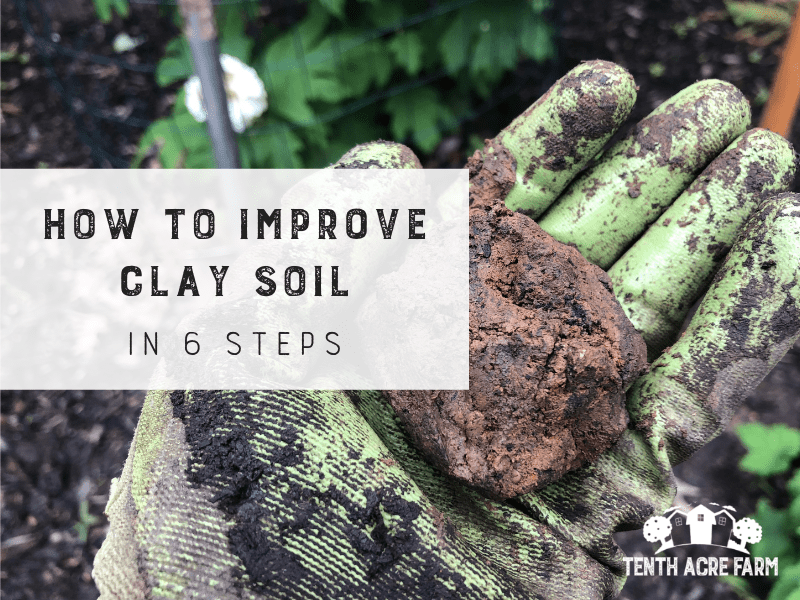
Step 5: Apply Composted Leaves
Composted leaves are rich in organic matter and can help break down clay soil over time. Spread a layer of composted leaves over the soil surface and incorporate them into the top few inches of soil using a garden fork or tiller. This will provide important nutrients and promote the growth of beneficial microbes.
Step 6: Use Gypsum as an Amendment
Gypsum is a natural mineral that can help break down clay soil by improving its structure and increasing its ability to absorb water. Spread gypsum over the soil surface at a rate recommended by the manufacturer, and then use a garden fork or tiller to incorporate it into the top few inches of soil.
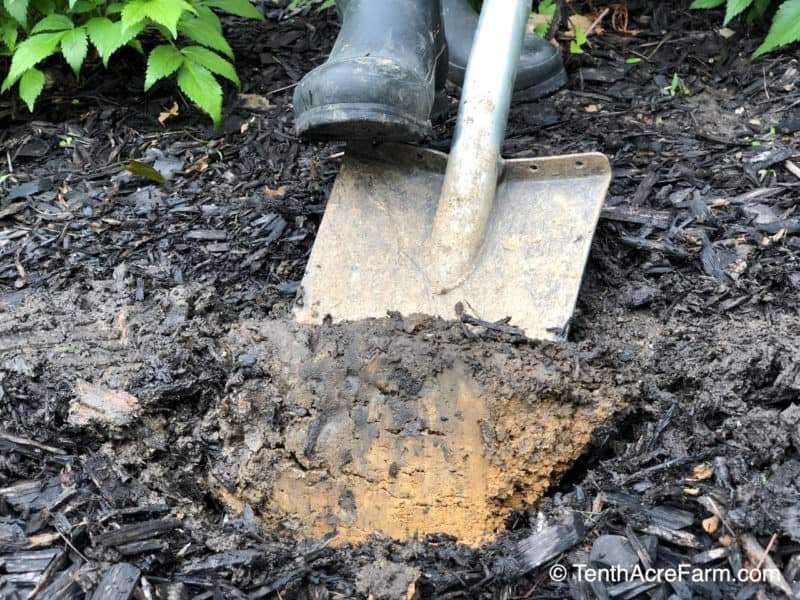
Step 7: Aerate the Soil
Aerating the soil is an important step in breaking down clay soil. This process involves creating small holes in the soil to allow air to flow through and help microorganisms break down the clay particles. You can use a garden fork or a mechanical aerator to accomplish this task.
Step 8: Mound Soil or Organic Material
Mounding soil or organic material on top of the clay soil can help to decompact it over time. By creating raised beds or mounds, you provide a higher concentration of organic matter that attracts bacteria, bugs, worms, and plants. These organisms will penetrate and decompact the underlying clay soil as they work through the organic material.
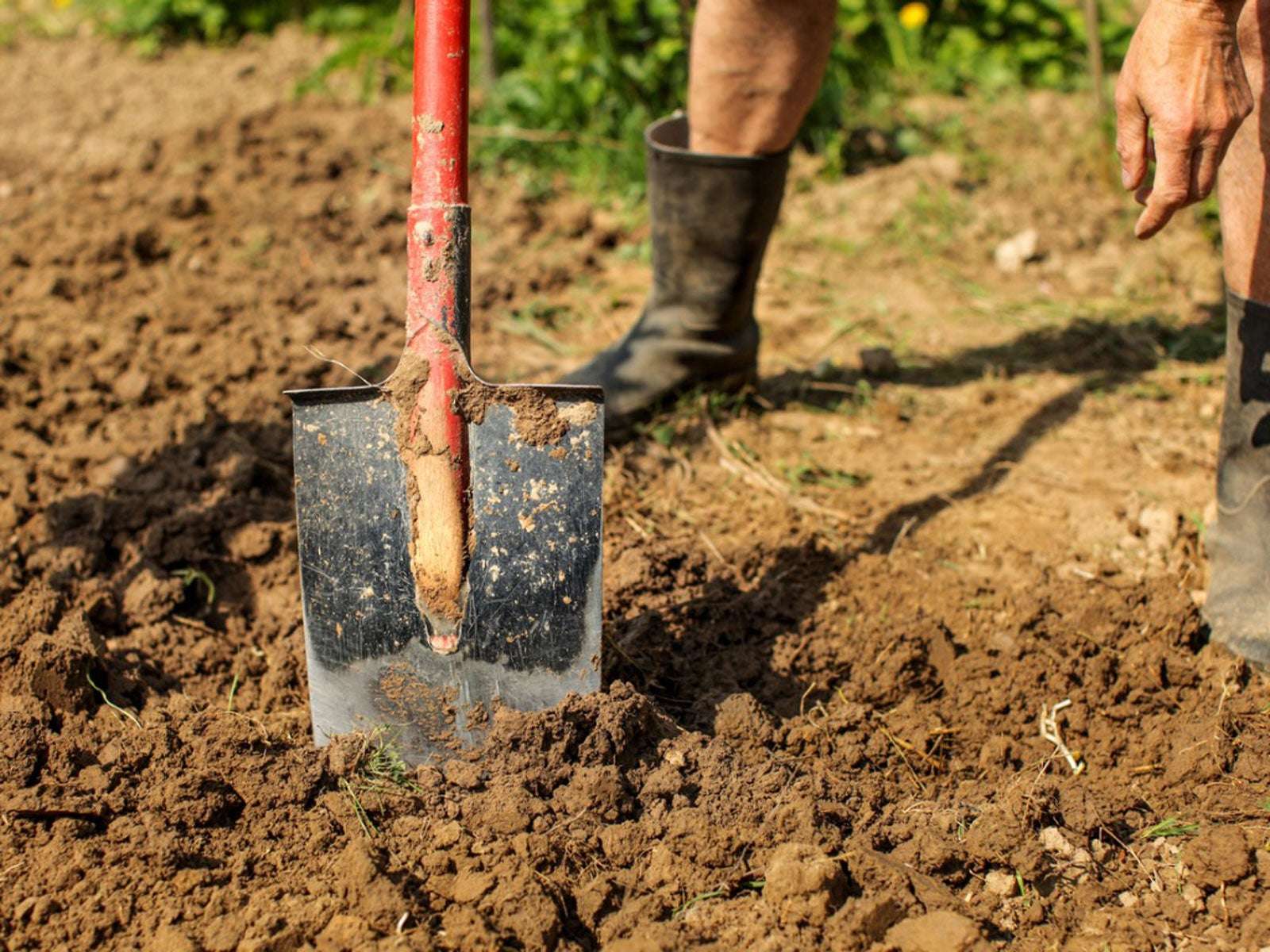
Step 9: Compost with Organic Matter
Composting clay soil with organic matter, such as animal manure, is an effective way to add nutrients and beneficial microbes. Start by creating a compost pile or bin and add organic materials like kitchen scraps, grass clippings, and leaves. Turn the compost regularly to ensure proper decomposition, and when it is ready, spread it over the clay soil as a nutrient-rich amendment.
Step 10: Utilize Commercial Soil Conditioners
In addition to organic amendments, there are several commercial soil conditioners available that can expedite the breakdown of clay soil. Products like perlite, greensand, lime, sulfur, gypsum, and vermiculture can all assist in breaking down clay soil and improving its structure. Follow the instructions provided by the manufacturer when applying these products.

Step 11: Mulch the Clay Soil
Mulching clay soil with organic materials can provide numerous benefits. Mulch helps regulate soil temperature, conserve moisture, and prevent soil erosion. Additionally, it adds organic matter as it breaks down, attracting bacteria and bugs that aid in breaking down the clay over time. Spread a layer of mulch over the surface of the soil, leaving a few inches around the base of plants to prevent rot.
Step 12: Avoid Compact Clay Soil
One of the key factors in breaking down clay soil is avoiding compaction. After aerating and amending the soil, refrain from walking on it as much as possible. Compacting the soil can reverse the progress you have made and hinder the natural processes that are breaking down the clay.
Step 13: Grow Cover Crops
Cover crops, especially nitrogen-fixing plants like legumes, can be an effective way to improve clay soil. These plants help break up the compaction and add valuable organic matter when tilled back into the soil. Consider planting cover crops in your garden during the off-season to maximize the benefits they provide to clay soil.
Step 14: Use Raised Garden Beds
Raised garden beds filled with organic matter are a great solution for breaking down clay soil gradually. By creating raised beds, you can control the growing environment, ensure proper drainage, and continuously amend the soil with organic materials. Over time, the clay soil within the raised beds will break down and become more suitable for planting.
Step 15: Break Up Clay Soil without Tilling
Finally, breaking up clay soil without tilling is possible by employing a method known as sheet mulching. This technique involves layering organic materials such as cardboard, compost, straw, and leaves directly on top of the clay soil. Over time, as these materials decompose, they create a rich, fertile soil layer while breaking down the clay beneath it.
In conclusion, breaking down clay soil requires a systematic approach and a combination of amendments and techniques. By incorporating organic matter, aerating the soil, using soil conditioners and avoiding tilling, you can effectively break up clay soil and create a healthy growing environment for your plants. Follow these 15 steps, and with time and patience, you will transform your compacted clay soil into a thriving garden bed.

